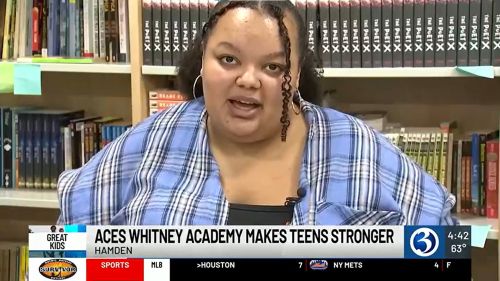-
Our Agency
- About Us
- Calendars
- Contact Us
-
Directions
- ACCESS
- ACES at Chase
- ACES International Preschool and Childcare Center
- ACES Transportation Services
- Center for Autism Spectrum and Developmental Disorders
- Central Office
- Educational Center for the Arts
- Educational Technology
- Little Theatre on Lincoln Street
- Mill Road School
- Network Services
- Staff Development / Administration
- Village School
- Whitney High School North
- Wintergreen Interdistrict Magnet School
- Human Capital Development
- Education Foundation
- News / Press
- Publications
- Request for Proposals
- Employment
- Events & Workshops
- Referrals
-
Schools & Programs
-
Special Education Schools
- Center for Autism Spectrum and Developmental Disorders
- Mead Elementary School
- Mill Road School
- Village School
- Whitney Academy EXPLORE & CREATE
- Whitney High School North
-
Magnet Schools
-
ACES at Chase
- About Us
- ACES at Chase: History & Origins
- Admissions
-
Student and Family Portal
- Breakfast and Lunch Menus
- Cancellations, Delays, and Early Dismissal
- Community Health Center
- Dress Guidelines
- Family Teacher Organization (FTO)
- Health Office
- Principal's Corner
- Monitoring Grades: PowerSchool Parent Portal
- Quick Links
- Student Handbook
- Summer Reading and Math
- Technology & Digital Citizenship
- Virtual Suggestion Box
- Document Library
- Contact Us
- Back to ACES
- Educational Center for the Arts
- Wintergreen Interdistrict Magnet School
-
ACES at Chase
- Alternative Education
- ACES Early Head Start
- ACES International
-
ACES International Preschool and Childcare Center
- About Us
- ACES International Preschool and Childcare Center Donations
- Admission Interest
- Meet the Staff - Newtown Center
- Meet the Staff - Woodbury Center
- Calendar
- Contact Us - Newtown Center
- Contact Us - Woodbury Center
- Family Portal
- Enroll Now: ACES International Preschool and Childcare Center Newtown Location
- Back to ACES
- ACES Open Choice
- Family and Community Engagement
- Magnet School Parent Choice
- School-Based Services
-
Special Education Schools
-
Services
- ACCESS Adult Vocational Services
- ACES Insurance Collaborative
- ACES UP Renewable Energy Solutions
- Alternate Routes to Certification
- Business Partnership Opportunities
- Center for Safe Schools
- Clinical Services
- Educational Technology
- Facility Rental
- Fingerprinting
- International Programming
- Marketing and Communications Services
- Network Services
- Professional Learning
- Regional Education Councils
- Regional Special Education Transportation
- Speech and Language Services
- Transportation
- World Language Services
- Find
OT Time!
Understanding the Senses
Did You Know? ...
Our sensory systems are actually made up of 7 different senses, not 5. We all know about the visual (sight), auditory (hearing), olftactory (smell), gustfactory (taste), and tactile (touch) systems, but there are 2 more systems that most people do not know about.
- Proprioception (body position/force) – Receptors in the joints and muscles allow you to sense the position your body is in and how much force you are moving with. It functions to help you move in a coordinated way.
- Vestibular (balance and motion) – Two receptors in the inner ear (linear and angular/rotary motion) provide two main functions:
- Protection – maintain balance and appropriate muscle tone for posture and motion
- Discrimination – maintain posture/upright position, spatial orientation, and eye-hand coordination
Sensory Processing Disorder
is a condition in which the brain has trouble receiving and responding to information that comes in through the senses. Input from our senses help create sensory-motor movement experiences, which are used each time a person engages in fine or gross motor movements.
Sensory Modulation Difficulties
are an over or under-reaction to sensory stimuli and an inability to regulate reactions and responses to stimuli from the internal and external environments. This may lead to sensory over-responsivity, sensory under-responsivity, and/or sensory seeking/craving behaviors.
Sensory Over-Responsivity
Sometimes referred to as “sensory defensiveness,” this refers to children who respond more intensely and faster for longer durations.
Example: bothered by sounds in a busy mall
Sensory Under-Responsivity
These children show less of a response to sensory input than what would typically be expected for the situation. They take longer to respond and require more intense input before responding.
Example: doesn’t seem to notice being hurt
Sensory Seeking/Craving
These children have an intense craving for sensory experiences and will actively seek this out, usually in ways that aren’t appropriate to the environment.
Example: takes excessive risks during play, such as jumping off of furniture
Specific questions or comments?
Contact your school’s occupational therapist!
Information Compiled by Melissa Lavorgna, MOT, OTR/L
This information is also available as a printable handout.









